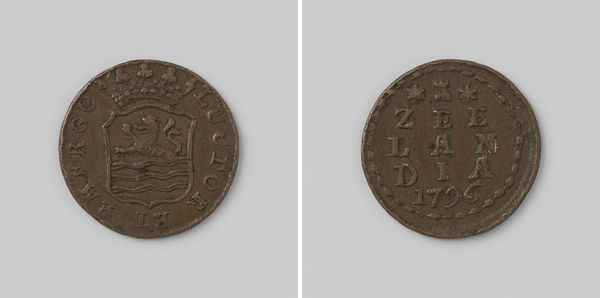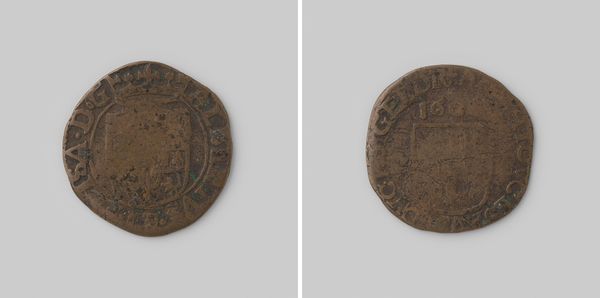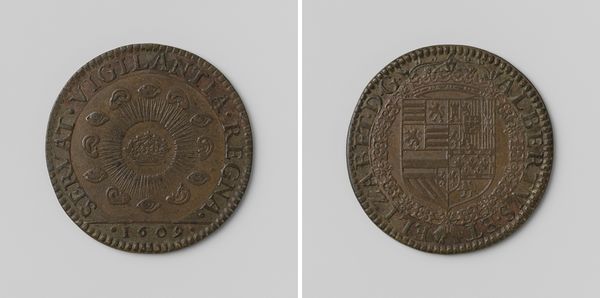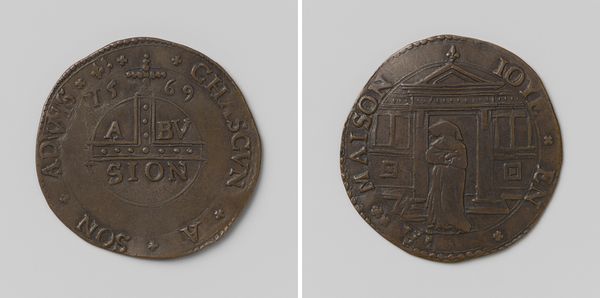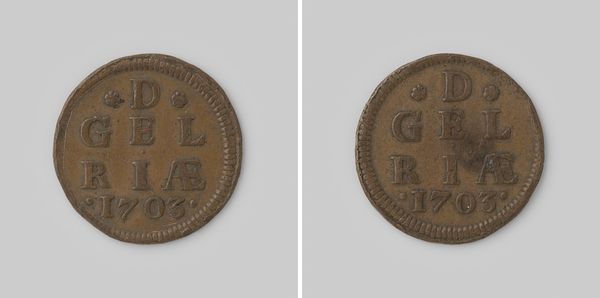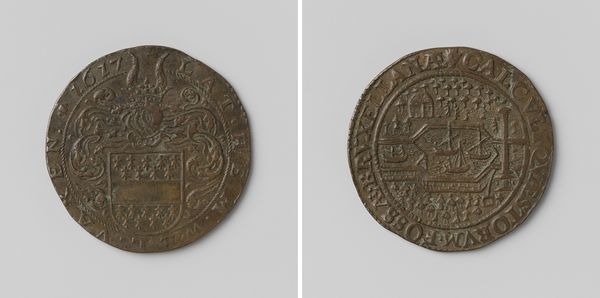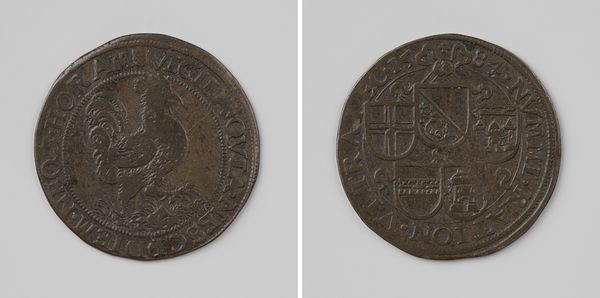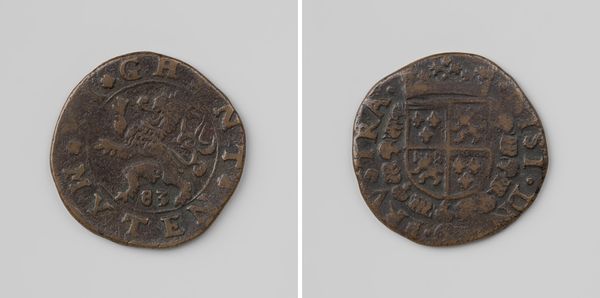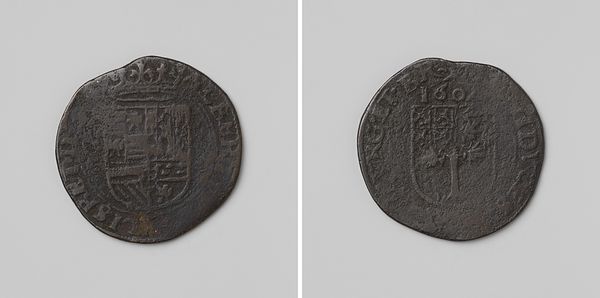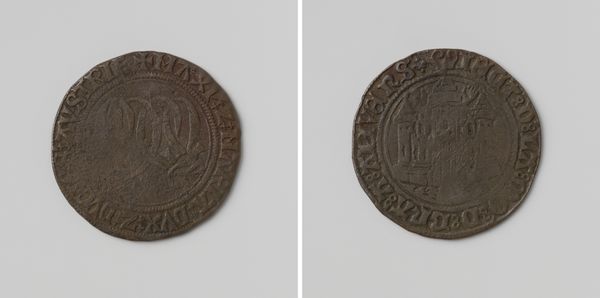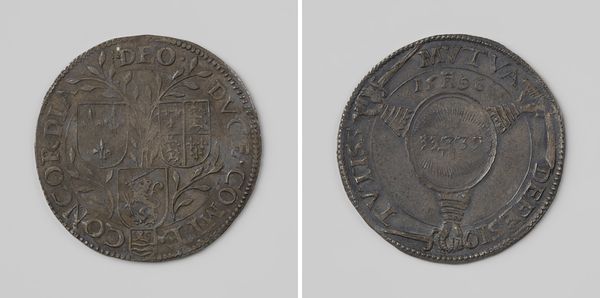
print, metal, engraving
#
medieval
# print
#
metal
#
sculpture
#
geometric
#
engraving
#
statue
Dimensions: diameter 2.2 cm, weight 2.32 gr
Copyright: Rijks Museum: Open Domain
This copper alms coin, dating back to 1573, was made anonymously for the Catharina-gasthuis in Leiden. It was designed to be given to the poor. Its material and production speak volumes. Copper, a relatively inexpensive metal, was likely die-struck – a process involving hammering metal between engraved dies to create a raised design. The designs themselves, including a crowned wheel on one side and a shield on the other, would have required a skilled hand to carve the dies. The notch cut out of each coin may have been done to prevent wealthier members of society from using this alms coin. The coin’s small size and humble material belie its significance. It represents a system of social welfare operating during times of hardship, reflecting both communal concern and perhaps also the social divisions of the time. It stands as a reminder that even the most utilitarian objects are infused with social and economic meaning.
Comments
No comments
Be the first to comment and join the conversation on the ultimate creative platform.
